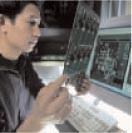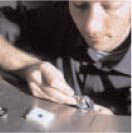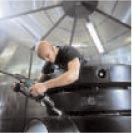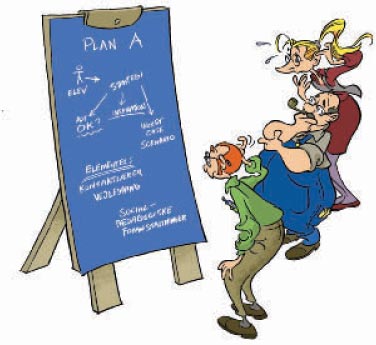|
|

Retention in Vocational Education in Denmark– A best practice studyColophonTitle: Retention in Vocational Education in Denmark Inquiries, if any, should be addressed to pub@uvm.dk
Abstract If Denmark is to meet the challenges of globalization, vocational education programmes must be attractive to and include growing numbers of youth with varied backgrounds and qualifications. Effective efforts to reduce drop-out rates and increase student retention are crucial to the success of VET programmes. Educational reforms have led to new pedagogical roles and instruments; the ways in which these are implemented are important to students' experience of coherence, relevance, and structure in the course of their VET programmes. This publication is a best-practice study of student retention in vocational youth education programmes across fields, entryways, and student groups, with specific examples from selected schools.
ContentsForeword by the Minister of Education 1 Background 2 Transition to vocational education 3 Basic Programme - start-up 4 Basic Programme - pedagogics, progression, and professional competences 5 Transition to the main programme 6 Main programme 7 Institutional strategies Complete table of contents Undervisningsministeriet © The Ministry of Education 2005 Foreword by the Minister of EducationA greater number of our youth must complete a post-compulsory education programme, as those without youth education run a much greater risk of unemployment and an adult life on the margins of the labour market. The government's “New Goals” platform from February 2005 set the ambitious goal of at least 85% of a youth cohort completing a youth education programme at upper secondary level in 2010, and at least 95% in 2015. Dropouts from youth education programmes - and especially from vocational education programmes - are a serious barrier to reaching these goals. We must therefore be better at focusing our resources on the retention of vocational education students. Throughout the years, there have been many different initiatives aimed at reducing dropout rates. New, flexible educational pathways have been introduced, as have new tools such as the personal education plan, the logbook, the contact teacher scheme, new goal descriptions, and the web-based planning tool Elevplan. Several studies have shown that schools' use of these tools influences how students experience coherence and structure in the course of their education and, in the end, whether or not they drop out. We know that many vocational colleges are already making great efforts to retain students and bid farewell to dropping out. I hope we can make these cases of best practice spread like rings in water. I would like to encourage schools to learn from each other and to tell about the initiatives that many schools have implemented. We have brought together a number of these good examples in this publication. More detailed information about the examples in this publication is available on the Danish Ministry of Education's website (http://www.uvm.dk) in the internet publication “God praksis for fastholdelse af elever i erhvervsuddannelser,” which also contains a range of specific examples of tools and instruments that schools have used with success. I hope that both publications can inspire vocational colleges, Youth Education Centres, municipalities, and other institutions, in their initiatives directed at fighting dropout levels in vocational education programmes. Because these efforts can succeed - and many good examples show this. 
Bertel Haarder 1 Background
One of the main goals of the vocational education reform of 2000 was to make vocational education programmes attractive to, and include youth with varied backgrounds and qualifications. The reform was, therefore, to a great extent a pedagogical reform. The point of departure for teaching and learning was now to be the individual student profile. The reform introduced new instruments to support the individual student's educational programme; the log book (an education portfolio used to link school and workplace learning), the personal education plan (where the individual student's actual study programme and progression has to be formulated), the contact teacher (tutor or mentor) programme, new goal descriptions, and Elevplan (an internet-based tool to aid the planning of and follow-up on the individual student's learning pathway). Previous evaluations of the reform indicate, however, that the ways in which schools implement these new roles and instruments influence students' experience of coherence, relevance, and structure - or the opposite - in the course of their educational programmes.[1] The government's “New Goals” platform from February 2005 set the goal of at least 85% of a youth cohort in 2010 completing a youth educational programme at upper secondary level. For the year 2015 the goal is 95%. The Ministry of Education therefore initiated a qualitative best-practice study of good practice for student retention in vocational youth education programmes across fields, entryways, and student groups, with specific examples of how this challenge is currently being met by selected schools. The study was performed by Danish Technological Institute. It was carried out as a qualitative analysis by means of focus group interviews at a range of schools representing geographic, entryway, vocation, and basic and main programme parameters. Focus group interviews were held with contact teachers, school programme managers, educational and vocational counsellors, and students. In addition to this pamphlet, there is a longer report containing a toolkit with a range of specific examples of tools and instruments and ideas for the retention of students in their vocational educational programmes. The full report and toolkit (only in Danish) can be found at http://static.uvm.dk/publikationer/2005/fastholdelse. VET education in Denmark - an explanatory noteVocational education in Denmark is structured as a basic programme and a main (specialization) programme. The main programme consists of alternating periods of school study and apprenticeship at an enterprise. The basic programme is made up of 7 entryways, 6 technical and 1 commercial. The technical entryways are:
The commercial entryway is:
Each entryway leads to any one of a range of specializations in the main programme. Vocational colleges and other institutions offering vocational education are approved for either the basic or the main programme or for both. Some colleges offering the main programme are organized as boarding schools. Details on the structure of the Danish VET system can be found at http://www.delud.dk/dk/publikationer/VETPortrait/index.htm (“Portrait of the Danish VET System”). A detailed description of the Danish National Vocational Qualifications System can be found at http://www.oecd.org/dataoecd/33/40/34259829.pdf (“The Role of National Qualifications Systems in Promoting Lifelong Learning - Background Report for Denmark”). For a description of the Danish VET System see also: “The Danish Vocational and Training System” at http://static.uvm.dk/publikationer/2005/VET. 2 Transition to vocational education
Schools have found that introducing students to vocational educational programmes at an early stage is beneficial. Early introduction to vocational education at primary and lower secondary school levels can give students a chance to acquaint themselves with a range of professions and branches, and to learn about what it is like to be a VET student. Students can become more familiar with the content and demands of VET programmes, and thus have a better basis for making their own choices. They can become aware of vocations that they never knew existed, such as that of communications electrician, or they can discover that, contrary to popular opinion as shown on TV, painters do not produce artistic interior decoration at the drop of a hat. Early introduction to vocational colleges can prevent later culture shock, because students are better prepared for an educational setting that from day one targets the labour market. The study presents examples of collaboration between vocational colleges, lower secondary schools, production schools, Youth Education Counselling Centres, and trainee programmes. Bridge-building with primary and lower secondary schoolsBridge-building also with young primary school children Bridge-building is not confined to the voluntary 10th grade.[2] Vocational colleges have collaborated with younger students - at EUC MIDT[3] as young as 3rd grade. Here, 3rd through 6th grade students are paired up and build a house on a 1:20 scale. In this way they become acquainted with VET Building and Construction programmes. House construction becomes more advanced with each passing year. The goal is to give students an overview of the entire process - starting with creativity, continuing through design and technique, and ending with the practical work of construction. Vocational College students as ambassadors Bridge-building is not merely about having primary and lower secondary school students visit technical colleges; bridges are also built in the other direction. Students at Aalborg Technical College's Food Production and Catering entryway visit primary and lower secondary schools, where they tell about their experiences as VET students. Evidence shows that younger students are more likely to listen to peers who are just a bit older than themselves than they are likely to listen to adult, professional counsellors.
Institutionalized collaboration between school and municipality Bridge-building is becoming a form of institutionalized collaboration between EUC Syd and all of the primary and lower secondary schools in the town of Sønderborg. Based on an agreement with Sønderborg's mayor, the goal is for all 10th grade students to have participated in bridge-building activities so as to have a more informed basis for their choice of upper-secondary educational programme. Collaboration with production schoolsTime spent at a production school contributes to student clarification The Employer Confederation of Metal Crafts and Industry and the Union of Metal Industries have collaborated on the implementation of transition programmes between production schools and technical colleges. Slagelse Production School and Selandia Vocational College offer students the possibility of participating in a clarification programme. This gives students a better idea of those main programme specializations that are related to the Crafts and Engineering entryway. In addition, students with learning difficulties have their vocational skills strengthened and their self-confidence boosted, thereby reducing their risk of dropping-out. A breather for students about to drop out A short stay at a production school can be a good solution for students who are about to drop out of the basic programme period. This can give them a breather where they can strengthen their personal competences as a prerequisite to completing the basic programme. Conversely, there are examples of students at production schools who enter vocational colleges in order to find out if they are ready to start vocational education; these are typically students who have already dropped out of a vocational education programme. Trainee programmesTraineeships for minors The Crafts and Engineering Trades programme has established a nation-wide initiative which gives young people a chance to try out vocations in a trainee-like situation. Trainees must be under 18[4] and have finished the ninth grade. The Employer Confederation of Metal Crafts and Industry and the Union of Metal Industries feel that this programme has been a success; when the trainee realizes that this branch is really not for him or her, as well as when the trainee establishes an apprenticeship. The initiative comprises an outreach programme with Denmark's 46 Youth Education Counselling Centres in order to establish a greater number of trainee programmes.
Observations
3 Basic Programme - start-up
It is typically a motley collection of students that starts a basic programme, each with his or her own background and expectations. Vocational colleges make great efforts - also before the programme actually starts - to ease transition, focusing on student well-being and on practical and logistical considerations such as transfer credits, room assignments, student grants and loans, and the potential need for remedial Danish classes. Introductory sessionsIntroductory assessment Many schools invite coming students to introductory sessions that take place before school starts. These sessions typically take place in June for those students who will be starting in August, and in December for those starting in January. These introductory meetings are organized in varied ways. Some schools focus on a general introduction to the school and the basic programmes; others organize individual meetings between students and their contact teachers and an introductory student assessment as preparation for the personal education plan. In general, introductory sessions focus on:
Compulsory introduction Since participation in these sessions varies quite a bit, some schools are making introduction sessions compulsory. This means that the students have to cancel if they are unable to attend. "Phase-in" consultations
Some schools offer “phase-in” consultations with students, using the student's personal education plan as a point of departure. The goal of these consultations is to clarify the student's expectations and competences, to identify any needs for special pedagogical support, and to get an idea about the student's coming choice of programme and specialization. Students are asked to bring their lower secondary school graduation certificates with them, so that the vocational college can get an idea of their formal achievement level. The first weeksLogistics in order It is important that students arriving at a vocational college be made to feel at ease, and that all logistics be in order. Where and when classes are held, distribution of materials, the first meetings with the contact teacher and with other students - none of these must be chance events. Schools know that if logistics are not in order, then students easily get lost and are more prone to develop a negative attitude. Assessment of prior learning Vocational colleges use a range of methods in the initial phases of the basic programme to assess students' prior learning. The central issue is what the students really can do, and not what they have learned, in relation to the goals of the educational programme. Workshop activities, where vocational teachers can observe the students, can be a tool for assessment. Practical workshop experience also helps students find out if they are on the right pathway. In addition, most schools test students for their achievement levels in Danish, mathematics, and sometimes English. All of this ensures that students begin at the proper level and are neither bored nor find the work too difficult. In order to plan learning activities so that they fit student backgrounds and prerequisites, a few colleges test so as to ascertain individual students' learning style.[5] Students draw up the rules Vocational colleges balance in different ways the need to start teaching the profession with the need for students to get to know one another. Some schools let the students decide what values and rules are to apply, so that everyone can get along and function together. The Technology and Communication programme at Northwest Jutland Education Centre in Thisted allows students to decide upon rules for the use of mobile phones and computer games. This is based on the observation that rules that students have formulated and agreed upon - that phones can be on but must be in silent mode, and that SMS and game activity is restricted to breaks between classes - are more likely to be respected than rules that have been imposed from above. Vocational colleges agree that once students have teamed up in classes or in groups, it is a very bad idea to disband these - for example in an attempt to create homogenous groups as a response to poor results on a Danish exam. Students who do not thrive socially are more likely to drop out. Fixed teaching teams It is important that students meet their contact teachers right away, and equally important that students always have the same small teaching team working with them. Students appreciate the fact that teachers know their name and who they are, and knowing who to go to gives the students a sense of belonging. Most contact teachers have their initial student consultations during the first weeks of the programme. These consultations are held in order to create student-teacher trust, but often also focus on what it is that the student expects of the programme, and what the student will have to accomplish in order to graduate. Consultations can deal with everything from long-term goals, programme requirements, and apprenticeship applications, to personal behaviour and appearance. Observations
4 Basic Programme - pedagogics, progression, and professional competences
Once daily life at the vocational college has taken shape after the first few introductory weeks, several issues still remain that are crucial to student well-being and to retention:
Positive experiences with Elevplan The basic programme contains many goals and sub-goals. It can be difficult for the student to gain an overview of these goals and of the basic programme's cohesive principles. Elevplan and the personal education plan are tools that can help students create a professional framework and focus. The extent to which Elevplan is implemented varies from school to school. Common to all schools, however, is the observation that teachers and students are pleased with this tool. Elevplan can be used as an overall framework for the individual student; it contains goal and sub-goal descriptions, the personal education plan, and information about absenteeism. Elevplan gives students a chance to monitor their own situation and progress, and some masters as well are beginning to use it to track their apprentices' progress. Several of the vocational colleges set schedules for one to five weeks at a time, so that students always know what is about to happen. Especially for younger students and those from ethnic minorities, well-structured frameworks and mutually understood rules and regulations are crucial for their sense of orientation and to prevent them from feeling lost. DifferentiationShortened basic programme Vocational colleges are aware that attention to students with learning or personal and social difficulties must not be at the cost of well-functioning students. Schools attempt in various ways to provide for differentiation in materials and in the design of assignments, in order to assure that achievers be sufficiently challenged. The Building and Construction entryway at Aarhus Technical College has designed an introductory competence assessment process so that the teaching team can decide whether a student needs greater challenges or perhaps a shortened basic programme. The school is of the opinion that there is no particular benefit to giving an endless series of extra assignments to high-flyers. If a student has attained the main goals of the basic programme, then a shortened basic programme can be a real option. The achievers want to get going with their apprenticeship. This flexibility on the part of the school emphasizes the fact that students' professional competences are taken seriously. 
Turbo classes and enterprise-oriented projects Hamlet (a technical college in Northern Zealand) employs several models to provide for the needs of achievers; the “turbo” basic programme, programmes for crossover students who have completed general upper secondary education, and enterprise-oriented school projects. The enterprise-oriented projects, constructed so that they fit the Framework Regulation on the Basic Course in Vocational Education and Training, are integrated as part of the curriculum and are based on the personal education plan. Students solve real problems that are formulated by their present - or by a potential - apprenticeship enterprise. Pedagogical instrumentsMotivation is the most important driver Student motivation is crucial for teaching and for being able to help the individual student. Students and the vocational colleges express the belief that when the individual student is motivated, then it is of secondary importance if he or she should have some difficulties along the way. On the other hand, school response to those students who just do not care or do not bother needs to be rapid and unequivocal. Use of job advertisements and branch orientation sessions Vocational colleges feel that it is easier to maintain student motivation when learning activities are concrete and directly relevant to branch professionalism, or when they are based on real enterprise-related problems, as in the Hamlet example above. Another instrument is the use of job advertisements so that students can get a realistic picture of the skills and competences that are in demand in the labour market. The Food Production and Catering entryway at Aalborg Technical College often invites branch employees to talk about real, everyday life at work. Aalborg Business College arranges an annual branch orientation day. Participating enterprises are encouraged to send their own apprentices so that they can talk to students at the school. Aalborg Business College feels that these arrangements help many students with their clarification processes, and eliminate prejudices and the rosy picture of what work really is like in the various branches. Enterprise-located learning activities Vocational colleges are making increasing use of short-term enterprise-located learning placements during the basic programme as an element in students' personal education plan. This targets students who are unsure of their direction and who have lost motivation and are close to dropping out. There is evidence that this instrument works. First, students get a positive “aha!” feeling that helps clarify their situation and boosts their level of motivation. Second, the process sometimes leads to an apprenticeship agreement. Third, the enterprise-located period gives the enterprise a chance to try out having apprentices before actually signing any apprentice contracts. Some schools, however, are reluctant to use enterprise-located activities with the least motivated students, since the schools want to maintain good relationships with enterprises. Contact with students in the main programme is a motivating factor Contact with students from the main programme can be a motivating factor that enables basic programme students to develop a greater sense of focus on their long-term goals. Contact can occur when for example Food Production and Catering students from the basic and the main programmes work together on a large project, or hairdresser students in the basic programme get a chance to follow everyday life in the main programme and experience first hand what they are going to learn and be allowed to do on their own. Main-programme students can also be invited to describe life in the main programme to basic-programme students. Contact teacher, the teaching team, and consultationsRapid follow-up A recurring theme of the best practice study is the importance of the framework composed of the contact teacher and the teaching team. Students feel that they are being seen, that there is a watchful eye, and that they know where to go for help. Students feel that the small teaching team can respond rapidly, can make demands of the students, and can act unequivocally, all of which are important for student motivation and learning behaviour, and all of which give the student a sense of direction. A prerequisite though, is that the teaching team functions as a team. If students are to find their place in life, it is important that they get to know themselves and become acquainted with the demands set by the outside world. Regular consultations with the contact teacher help transform personal and vocational goals into something tangible, and help re-orient students who have become sidetracked. The contact teacher can listen, but can also offer professional assistance if necessary. Self-reflection and smileys Vocational colleges organize the contact teacher function in various ways. Some have weekly scheduled appointments. Others arrange evaluation consultations every fifth week. Students at the Meat Processing School, Roskilde Education Centre, have to produce a written self-evaluation as preparation for consultations. This forces students to reflect on their own situation. The Technology and Communication entryway at the Northwest Jutland Technical College has developed a smiley system which students and teachers use to attune mutual expectations. Elevplan – an instrument for goal planning Some schools include Elevplan as an element in their formalized consultations, using, for example, the student's sub-goals as a point of departure. Elevplan can thus be a tool for educational and professional counselling that facilitates realistic planning and gives the student a better overview of how to reach long-term goals. Informal consultations crucial for retention All the vocational colleges state that ongoing follow-ups of the individual student by means of informal consultations and dialogues are just as important, and are crucial for student retention. Students' problems do not adhere to school schedules. Special student groupsSome students continually challenge behavioural codes: Rules and norms are ignored. The response to this often lies in teacher experience and in an armada of non-traditional tools, rather than in the traditional role of the vocational teacher. Expulsion can be used as a final step. This has a preventive function in some cases, and can be used to avoid demoralization of the large group of students who are primarily focused on their vocational education programme. Dealing with absenteeism Students feel that there is a watchful eye that reacts promptly when they skip workshops or classes or do not hand in their work, and this has a preventive effect. But students also have to learn to take their share of responsibility. Some vocational colleges register absenteeism in Elevplan, so that the student and perhaps the master can follow-up; others use Elevplan to give students the responsibility for registering their own attendance. This makes a positive contribution to the development of student responsibility. Good morning and goodbye In addition to registering absenteeism, several vocational colleges focus on absenteeism patterns such as certain days of the week, times of the day, or subjects. At the Commerce, Clerical Education, and Finance entryway at CEUS (Storstrøm Business and Technical College), students with a pattern of early-morning absenteeism are assigned to the “good morning” team which must greet the entryway manager in the morning. A similar system is in effect for the “goodbye team” in the afternoon. The "dungeon" The last resort before expulsion at the Food Production and Catering entryway at Aalborg Technical College is time served in the “dungeon”. The dungeon is the responsibility of one of the more experienced teachers who is highly respected by the students. The teacher runs a workshop in the basement where students participate in “school-enterprise-located” activities. Students work on specially organized projects that are written into the personal education plan. Most vocational colleges assess that a period of time in the dungeon is often highly beneficial. Students from ethnic minority backgrounds Students from ethnic minority backgrounds have to overcome many barriers if they are to complete their vocational education. Even if they have passed their supplementary Danish courses, there is still a vocational terminology and jargon that can be difficult to grasp. Extra efforts in the development of a pre-vocational language can be built into the educational programme structure, and can make a difference. Students from ethnic minorities rarely have a well developed network throughout Danish society, and extra contact teacher time can be helpful in contacts with authorities and apprenticeship places; this has been done with success at Aarhus Technical College. There is a special group of boys who are in dire need of understanding that there are rules to follow and demands that must be met, and that it is the school that sets the agenda; these students must be spread out to several classes so that they do not form cliques. School as learning place, school as storage space For the group of students with the most serious problems, the difference between school as storage space and school as learning space must be chiselled out in granite; the vocational education programme can be their very last chance. Typically, there are problems that demand cross-institutional collaboration; some students who are on the road right out of society are saved by round-the-clock School-Social Service-Police (SSP) collaboration based on the student's overall life situation. This demands resources that go far beyond the individual vocational college's competences and budgets. It is difficult for individual vocational teachers and contact teachers to draw the line between being a vocational teacher and being a social worker. Vocational colleges are generally aware that the role of contact teacher makes great demands on personal resources. It is important that the VET system as a whole define its expectations of the role of contact teacher, and define how far the contact teacher role and responsibilities should extend. As a result of changed student profiles, some vocational colleges have fused the contact teacher role and education and careers counselling services into a single unit with full-time staff. Observations
5 Transition to the main programme
Students who do not yet have an apprenticeship agreement when they finish their basic programme and are about to start the main programme are at risk of dropping out. Schools make great efforts to help such students by either finding an apprenticeship place or counselling students to switch to related programmes with better job opportunities. Close contact to enterprisesProactive outreach pays off It is not enough for vocational colleges merely to maintain good relations with enterprises that already take on apprentices; schools must also take a proactive outreach approach to getting new enterprises approved for apprenticeships. The Technology and Communication entryway at Vejle Technical College is running a campaign this year to get a greater number of apprenticeship places approved. All of the vocational teachers were assigned a number of enterprises to contact; 40% of these contacts have subsequently resulted in a visit to the enterprise. The next important step will be rapid approval by the local educational committees. Approval should not wait until the first student has contacted the enterprise, but should be granted as soon as enterprises show interest in taking on an apprentice. Outreach can also mean contacting enterprises that have previously had apprentices and asking if it is not time for another round. The Building and Construction entryway at Herning Education Centre systematically contacts masters when a student graduates, to point out that it is time for a new apprentice. Information material and courses in coaching Other vocational colleges have produced information material for existing and potential apprenticeship enterprises. The material provides an easy-to-understand introduction to the process of having an apprentice. Aalborg Business College offers a course in coaching to the persons in enterprises who are responsible for apprenticeships, in order to create better school-enterprise cohesion. This has been a great success. Schools invite enterprises Several schools have invited enterprises to open house and branch arrangements where, for example, suppliers present their products. In this way enterprises get a positive introduction to the school and its programmes, and the school gets in touch with a greater number of potential apprenticeship places. Applying for an apprenticeshipSeveral schools have had good experience with job hunting courses for students applying for apprenticeships. Continuous advice as to the content and form of student applications also works well; vocational teachers, contact teachers, and education and careers counsellors, can all contribute their different skills to this process. Apprenticeship café Aalborg Business College runs an apprenticeship café where students learn to write good applications and handle job interviews. This is run as an elective a half year before the end of the basic programme. The school considers it important that students start systematically searching for an apprenticeship place early in the basic program rather than towards the end. Those who first sign an apprenticeship contract are often those who have frequently visited the apprenticeship café. Personal branding Schools increasingly emphasize helping students improve their self-presentation, since this is a prerequisite for getting your foot in the door of an enterprise. Ballerup Business College has worked with a personal branding project, which results in students getting a clearer idea of their strengths and weaknesses. Self-knowledge and communication skills are important parts of the process of finding an apprenticeship place. Spare-time jobs Several schools encourage students to get a spare-time study-related job within their branches. This gives students a chance to familiarize themselves with their coming vocations at an early stage, even if they merely carry out a series of varied odd jobs. Students get an idea of the tone of the workplace and learn to get to work on time; often, such jobs result in an apprenticeship contract. Jobzonen.dk A few schools have started using www.jobzonen.dk as a supplement to www.praktikpladsen.dk,[6] since Jobzonen is more frequently used by enterprises. Rethinking apprenticeship choicesSupplementary basic programme subjects and area subjects Some students are so set on a specific vocation that they would rather keep on with their wild goose chase for an apprenticeship place than be counselled to changing their specialization. Schools can see that as time passes, these students become less particular about their dream vocation. It is important for schools to tell students about alternative choices, since students themselves often have no idea about related educational programmes. Students often reject an educational possibility because of lack of knowledge. The Service Industries entryway at Odense Technical College, in collaboration with Dalum Education Centre and Tietgen Business College, arranges a supplementary basic programme subject for hairdresser students in the form of a project called “Finished with School - What Then?” The project employs enterprise visits and counselling in an effort to guide students towards other programmes. The College also has plans for the establishment of supplementary area subjects[7] for the cosmetician programme.
Placement consultations Many schools have a Trainee and Apprenticeship Office that registers students who have finished the basic programme but who have still not found an apprenticeship place. This helps maintain contact with the students, even if they take temporary jobs. Some schools use placement consultations to counsel students and inform them of alternatives. It is important that the schools implement procedures and systems that enable students to keep in touch, so that information about new apprenticeship places can be quickly forwarded to the student. Observations
6 Main programme
When students cross the threshold to the main programme they are generally much more focused, and this can be seen in the drop-out statistics. Students still value structure and clarity, but they work more independently and are not in so much need of social events and the contact teacher. When students run into problems, such as a disagreement with a master, rapid school intervention is the best measure to prevent drop-outs. Good school-enterprise relations can help to nip problems in the bud. Main Programme start-upAttune expectations Some students consider dropping out because immersion into the rapid work tempo and rougher workplace jargon can be frightening. In such cases, an early visit to the apprenticeship place by the vocational teacher can help to attune expectations between enterprise and student. Several schools with programmes that target knowledge and technology-intensive enterprises find that enterprises increasingly expect students to be able to contribute business value to the team from day one. When a workplace makes use of expensive equipment that must be utilized to its maximum, schools find that enterprises often have expectations that students cannot fulfil right away. In such cases, schools make great efforts to patch things up. Assessment of adult students' competences A few schools draw attention to the fact that it may be necessary to assess adult vocational students' prior mathematics and Danish competences. Some adults receive transfer credit for previous schoolwork, but this schoolwork has often happened so long ago that the student has forgotten a good bit. Assessment can also involve previous practical job experience, resulting in a shortened basic programme. Special efforts may thus be necessary early in the main programme, for example in mathematics for students within Technology and Communication specializations, to raise students' theoretical knowledge base to the level of programme demands.
Transfer from basic programme to main programme college The Ministry of Education has drawn up more rigorous rules regarding formalized collaboration between vocational colleges offering the basic programme and those offering the main programme. For colleges not approved to offer a main programme, there are still transfer problems when students have to change schools in order to begin their specialization programme. Vejle Technical College has had positive results with basic programme schools in the joint production of teaching materials to ease the transition to the main programme. Group work balances out differences in individual competences Silkeborg Technical College receives students from a range of basic programme schools into its main programmes; for example, students entering a range of Food Production and Catering specializations come from many different basic programme schools. The college makes sure that at the beginning of the main programme the students are mixed together in many different groups with balanced competence profiles. Respect for the master Schools offering the main programmes find their students much more motivated. There are rarely any problems with discipline or absenteeism. Ongoing contact teacher consultations no longer play the important role they had during the basic programme. Any absenteeism problems that occur must be dealt with unequivocally, proactively, and with rapid follow-up. Involvement of the master is often very effective in putting the brakes on absenteeism. At the Mechanical Engineering, Transport, and Logistics programme at EUC NORD, students must report absences to both the school and the apprenticeship place just as they would have to report absences from their job were they part of the labour market. This has reduced absenteeism. If there is no good reason for being absent, the student's wages are docked. An evaluation of a school dormitory pilot project for potential dropouts has shown that boarding school residence can be of great help in retaining these students. As of January 2004, this project became permanent, and students about to drop out can under special circumstances[9] be accepted in boarding schools offering the main programme. School-enterprise interactionClose school-enterprise collaboration is crucial to a successful main programme. In practice it is not always that simple to make communication function, even though some enterprises have begun to use Elevplan more actively. Checklists Simpler tools than Elevplan are sometimes needed to keep track of what students have learned in their apprenticeship and at school - for example a checklist where the student and the master check off what the student has completed at the enterprise. Odense Technical College, Service Industries, conducts an introductory consultation with the student and the master before the first school period; subsequently, the master is invited to evaluation consultations every other school period. Visits to the enterprise are beneficial A visit by the vocational teacher to the apprenticeship place is one of the best drivers of school-enterprise collaboration. This promotes mutual familiarity and creates an environment of trust. Should any problems arise with the student, rapid follow-up by the vocational teacher in collaboration with the master is very effective and makes a huge difference. If school-enterprise contact is not optimal, then involvement of the local education committee can be helpful in working out problems. Pedagogics, progression, and the formation of vocational identityCohesion of theory and praxis – Practicum Even though overview and structure are important in the main programme, students must learn to work independently if they are to succeed at a workplace. An important motivating factor for students is cohesion between what they learn at the enterprise and what they learn during school periods. This is the case when students take enterprise-related problems back to school, where they can work on in-depth solutions with the help and advice of the vocational teacher. EUC NORD lets mechanical engineering students work on their own cars; if a student comes with a car with faulty brakes, then that becomes the vocational teacher's point of departure. Learning processes move closer to reality when students diagnose and solve real problems as they work on a real car and are covered in oil and grease. Service Industries at Herning Education Centre has redefined all teaching goals for the dental assistant specialization into action competences. Three different types of patient care scenarios have been developed; students must contribute with practical, professional, and preventive health assistance. This learning model, called practicum, functions as a sort of school-enterprise apprenticeship where students present the case and are judged both on their performance and on their case review presentation. This works well, because students get a chance to employ a reflective process to link their practical enterprise experience with their school work. InternationalizationGrowing interest for study abroad Internationalization is becoming an increasingly important element for vocational colleges' efforts to remain an attractive option in the eyes of students. Moreover, study and training abroad increase students' job possibilities. An increasing number of students from Food Production and Catering at Aalborg Technical College finish their specializations abroad. The college has contacts and can help students find an apprenticeship abroad; this increases the attractiveness of the programmes and has a positive effect on the overall educational environment at the school. EU programme funds The refrigeration technician specialization at the Technical College of Jutland in Hadsten has made use of EU's Leonardo Programme in collaboration with schools in France, England, and Ireland. Students in the final phase of their main programme can participate in a three-week study-abroad session. Students have been showing increasing interest in this study-abroad period. At the same time, an increasing number of students are being offered jobs abroad as a result of their study abroad, thus giving a boost to students' sense of professional pride.
Observations
7 Institutional strategies
School management is increasingly considering drop-outs and retention as a complex strategic quality issue that therefore must also involve other actors. Professionalism and student well-being are the main focus points. In recognition of an increasing heterogeneity in the student profile, schools are treading new pathways in order to professionalize efforts targeting individual students before they start the basic programme. School management has been gathering inspiration from afar and forming new collaborative relationships, in order to better systemically address youth needs and youth cultures. Institutional strategies are supported by quality objectives and the active use of statistics. Entrance interviewCustomer service centre Schools are receiving a growing number of students who are unfocused and who have a broadening range of personal and social problems. Faced with this, EUC Vest has reorganized school entry procedures and counselling functions into a single unit called the “Customer Service Centre.” Students take part in introductory entrance consultations before they start their basic programmes, so that the school can evaluate any potential needs for special support efforts. This enables vocational teachers to support students' professional progress and development from the very start, and students with special needs can receive targeted and individualized support to better prepare them for their educational pathway. EUC Vest has allocated extra resources for retention efforts; experienced teachers who have a good grip on the students are used to monitor those who do not keep up with their schoolwork. Ongoing quality developmentInvolvement of vocational colleges' stakeholders
School management at CEU Kolding (Centre for Business and Training in Kolding) has formulated a vision of “Guaranteed Apprenticeships for All.” The vision is based on the school's quality development activities.[10] The school's goal with this vision is to signal the development of an institutional student retention policy that focuses on increasing the school's attractiveness to external stakeholders. A collaborative development programme involving the school's board of directors, middle management, and teachers, is in the process of being launched. This project, whose focal point is the learning team, combines pedagogical development with organizational development. Students are invited before programme start-up to an introductory consultation which focuses on the realism of the student's own considerations and choices. The learning team involves the student, the student's teachers, the student's parents if the student is a minor, and an enterprise - whether or not the student already has an apprenticeship agreement. Later on in the educational programme, apprenticeship enterprises present students with projects related to real enterprise problems, and students must in turn present their solutions and how they arrived at them. A panel questions the individual student about his or her presentation, and gives the student feedback. All this will make new demands on school-enterprise collaboration, but will also give enterprises a more active and influential role in the school-based portion of the programme. Focus on students with difficultiesNetwork collaboration Many students have severe personal and social problems; for a growing number, it is these problems, rather than learning problems, that lead to dropping out. CEUS has improved its efforts to target this group by using what can be characterized as a round-the-clock collaborative effort by the municipality, the prison and probation service, and SSP (school-social services-police network). Schools feel that when dealing with the most marginalized group of youth, the refinement of existing tools is simply not enough; a more radical approach is required. Targeted counselling of refugees and immigrants Over the years, CEUS has built up a varied bank of knowledge about refugees and immigrants. Differentiated counselling based on knowledge of individual cultures is a key to success. The many Bosnian refugees at the school usually come from families or localities with predominantly craftsmanship backgrounds. This gives them the ballast to make it through the Crafts and Engineering entryway. On the other hand, Somalian refugees' backgrounds give them better prerequisites for entering Commerce or Social Services and Health entryways. Hire a "streetwalker" As a consequence of changing student profiles, the management at EUC Syd has hired a “streetwalker”. This model is taken from social work environments, where a person with social work experience undertakes outreach work in troubled sections of inner cities. The streetwalker's presence on the street and active intervention can head off confrontation and unrest in the city. The streetwalker at EUC Syd is similarly a social worker, with the same functions within the school environment. Use of statistics and indicatorsKey data as indicators of problem areas Several vocational colleges systematically use statistics as a tool to follow-up on students. As part of its quality development, EUC Vest has begun improving its overall data basis so as to promote easier access. In the future, the school administration will produce and process all relevant statistical and economic data for the school. Key data for chosen indicators will be presented like traffic lights, with green as a positive indicator and red as a signal for immediate action. The school is in the process of identifying relevant indicators. Identification of drop-out patterns In order to improve retention efforts, Aarhus Technical College is focusing on statistics as a means of identifying reasons for drop-outs. Students are administratively registered as drop-outs when they no longer show up at school and the school is unable to get hold of them at the address or mobile phone number that is on record. Getting these students back on track requires close collaboration with the Youth Education Counselling Centres. Aarhus Technical College uses comprehensive data analysis in order to develop future pedagogical praxis. Data analysis has, for example, shown that students who have changed study programmes multiple times are at very great risk of dropping out. If these students are identified early, the school is able to take pro-active measures. Further development of Elevplan Aalborg Technical College has established a cross-entryway task force for the further development of Elevplan so that it better supports contact teachers' and the individual students' overview of education programme elements such as scheduling, module content and projects, and absenteeism frequency and pattern. Observations
Foot notes 1) (“Portrait of the Danish VET System”). A detailed description of the Danish National Vocational Qualifications System can be found at http://www.oecd.org/dataoecd/33/40/34259829.pdf (“The Role of National Qualifications Systems in Promoting Lifelong Learning - Background Report for Denmark”). 2) A voluntary extra year of lower secondary education before the student enters an upper secondary programme. 3) EUC is a series of vocation colleges in Mid (MIDT), South (Syd), North (NORD), and West (Vest) Jutland. 4) Special dispensation has been given by the Danish Working Environment Authority, using the same model as for production schools. 5) The test of learning styles is based on Howard Gardner's multiple intelligence theory. 6) A website where students looking for an apprenticeship place are obliged to register, where all approved apprenticeship places are registered, and where companies looking for apprentices may post advertisements. 7) Area subjects are subjects which are common to one or more VET programmes. 8) See “Statusundersøgelse. Praktikpladsopsøgende arbejde på erhvervsskolerne,” http://www.emu.dk/erhverv/doc/pub/generelt/statusundersoegelse.doc, Teknologisk Institut, 2003, for more information (Danish only). 9) See “Skolehjemsforsøg med frafaldstruede elever”, Danish Technological Institute, 2002. Available at 10) CEU Kolding's quality development is inspired by similar community college work on Long Island, N.Y.
|
||
|
To top of page |










